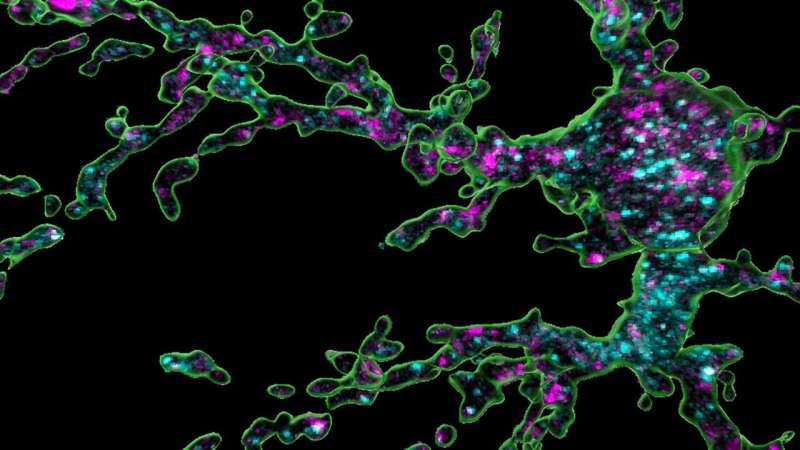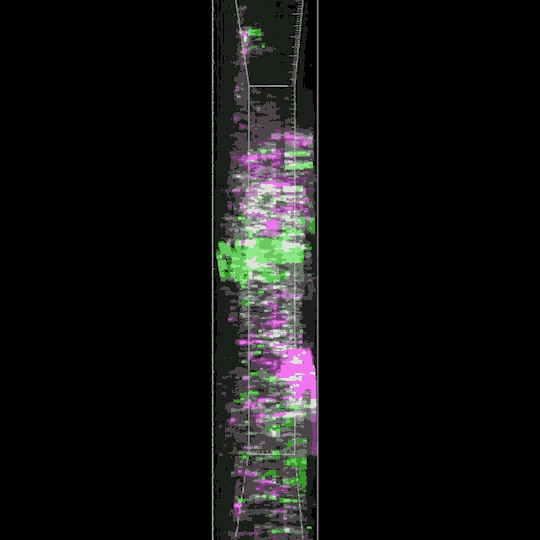Cells called OPCs, colored green, help the brain fine-tune its neural circuits as young animals develop. They engulf and eliminate connections, colored purple, the brain doesn't need. Understanding this process may inform new treatments for neurological disorders. Credit: Cheadle lab/Imaris software/CSHL, 2022
When the brain first wires itself up in early development, it creates more connections than it actually needs. Some of these connections, or synapses, will transmit critical signals as young animals begin to sense their surroundings. Others will be eliminated as the brain matures. Only those that the animal needs to understand and interact with the world are left.
Cold Spring Harbor Laboratory (CSHL) Assistant Professor Lucas Cheadle and colleagues have discovered that cells called oligodendrocyte precursor cells (OPCs) contribute to this pruning process. This helps shape a healthy brain during early development. Understanding this vital part of brain development may reveal new strategies for treating neurodevelopmental conditions like schizophrenia and autism spectrum disorder (ASD).
The discovery was sparked while using high-powered microscopes to examine the brains of adult mice. Cheadle's team noticed that many OPCs were actively engulfing the connection points between neurons. The team suspected the cells might be busy eliminating synapses that the brain did not need. Cheadle and his team wondered if OPCs did the same thing in younger brains. A young animal's experiences have a particularly profound impact on shaping neural circuits during early development.
The researchers raised young mice in the dark. When the mice were first exposed to light, OPCs began engulfing synapses in response. The cells were operating in their brain's vision-processing circuitry. "OPCs seem to be especially poised to regulate brain connections associated with experiences," Cheadle says. "These cells are very responsive to new experiences. They can take that information and use it to shape brain connections."
A cross-section of mouse brain tissue showing OPC cells (green) surrounded by neuron synapses (purple) in 3D. Credit: Cheadle lab/CSHL/2022
Published in Nature Neuroscience, the Cheadle team's discovery reveals an unexpected role for OPCs. Several kinds of cells help shape neural circuits by eliminating unnecessary connections. OPCs had previously only been known for producing cells that surround and support neurons.
Cheadle says, "This is a cell type that's really poised to sort of serve as an intermediary between what's going on in the world out there and what's happening inside of our brains."
Cheadle hopes this new information will help understand neurodevelopmental disorders better. He plans to investigate whether faulty OPC pruning plays a role in conditions like schizophrenia and ASD.
More information: Yohan S. S. Auguste et al, Oligodendrocyte precursor cells engulf synapses during circuit remodeling in mice, Nature Neuroscience (2022). DOI: 10.1038/s41593-022-01170-x
Journal information: Nature Neuroscience
Provided by Cold Spring Harbor Laboratory

























